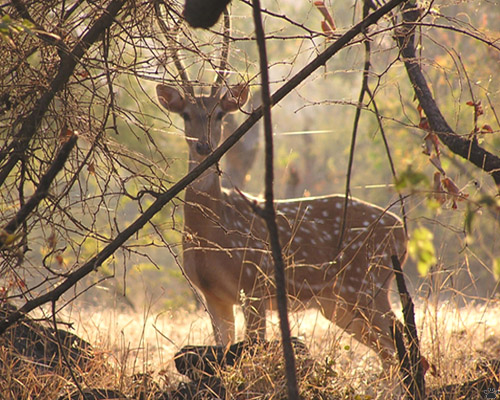
Spotted deer (Cervus axis), Pench National Park, Madhya Pradesh.Part 11. Central India
Just south of the Gangetic Plain are high, rocky Satpura and Vindhya Hills; once you cross them, you find yourself among the basalt cliffs and tablelands of the Deccan Plateau. This huge basin stretches all the way into Southern India. It was formed by massive volcanic eruptions 65 million years ago (which have probably contributed to the extinction of dinosaurs). Volcanic soils are usually fertile, but some parts of the regions have poor soil, and are less overpopulated than the rest of India.
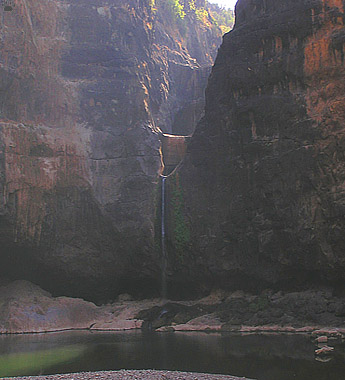
A canyon at the edge of Deccan Plateau, Ajanta Caves, Maharashtra. These basalt
cliffs are up to 200m/700' high in some places. |
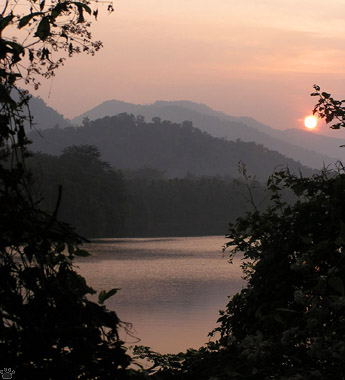
Wainganga River in Seonee Hills, Pench National Park. Mowgli stories
from R. Kipling's The Jungle Books take place here. |
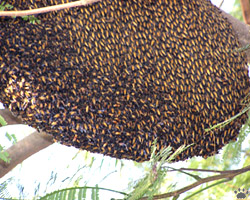
Giant honey bees (Apis dorsata), PNP. |
The state of Madhya Pradesh has the most extensive forests, and many national parks. It's one of the few places in Asia where numbers and diversity of large mammals are similar to those in East Africa. Tigers are by far the most popular, and draw millions of tourists, but there's a lot more to see. |

Nest of giant honey bees, PNP. |
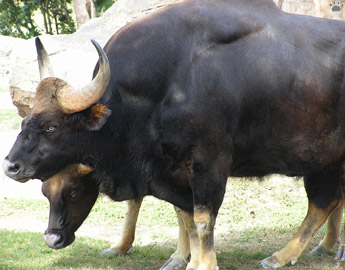 |
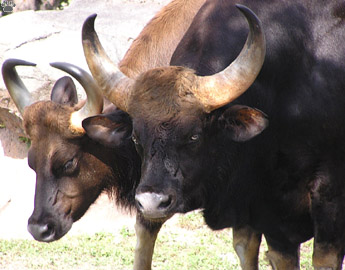 |
| Gaurs (Bos gaurus), PNP. |
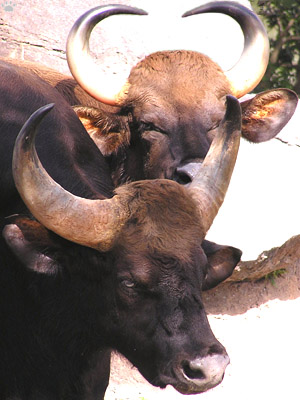
Gaurs during courtship, PNP. |
Gaur, locally known as bison or mithun, looks really impressive. It is the largest species of wild cattle in Asia: bulls can weigh up to 1500 kg/ 3300 lb. It is common in many national parks of India and southern Nepal, usually in low, partly forested hills. |
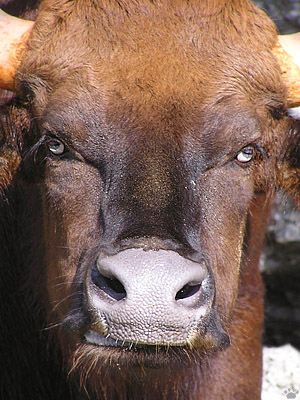
Female gaur, PNP. |
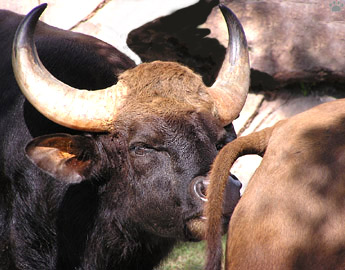 |
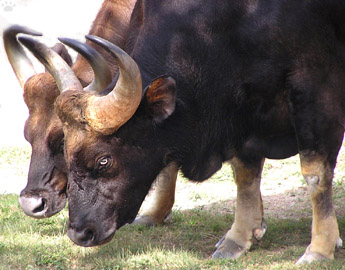 |
| Gaurs during courtship, PNP. |
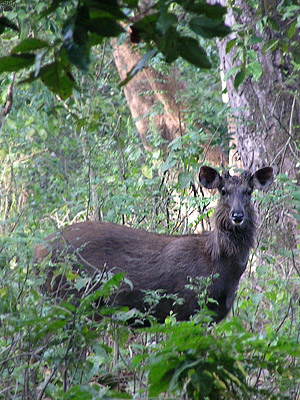
Sambar (C. unicolor), Kanha National Park, Madhya Pradesh. |
Sambar is the largest deer in India - up to 300 kg (660 lb) in central states. It is common in almost all protected forests from the Himalaya to Sri Lanka. Shy during the day, it can be very tame at night (if your flashlight is not too bright). Its alarm call is a loud "ponk!" |
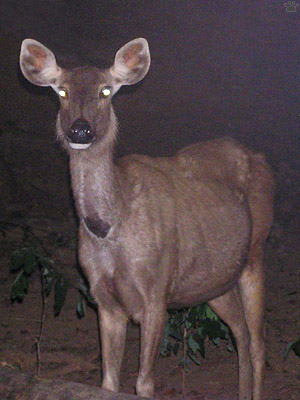
Sambar at night, Sasan Gir National Park, Gujarat. |
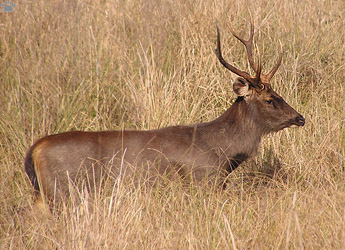 |
 |
| Sambar, Corbett National Park, Uttar Pradesh. |
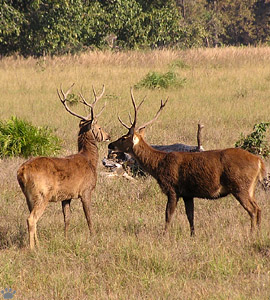
Upland barasingas (C. duvaicelli branderi),
Kanha National Park. |
The rarest deer in India is barasinga: each of its 3 subspecies exists in just one small area. The last herd in Central India is in Kanha. It is the only reason to visit this overpriced and overcrowded park: nearby Pench and Bandhavgarh National Parks are otherwise more interesting. Barasingas prefer forests with tall grass, floodplains and marshes. |
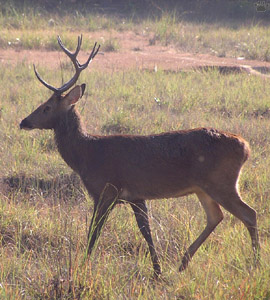
Wetland barasinga (C. d. duvaicelli),
Kateraniaghat Wildlife Sanctuary, Uttar Pradesh. |
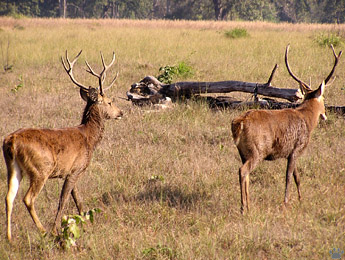 |
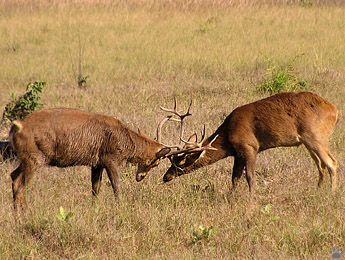 |
| Upland barasingas, KNP. |
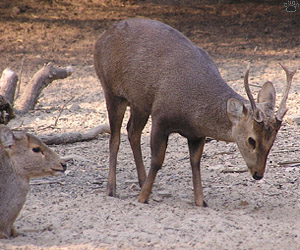
Hog deer (C. porcinus), KWS. |
Hog deer is also a tallgrass specialist. Not rare in some floodplains, it is very shy, and can be almost impossible to see. It is a bit more common in Northern India. |
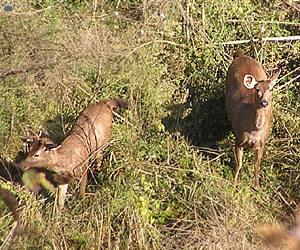
Hog deer photographed from a tree, CNP. |
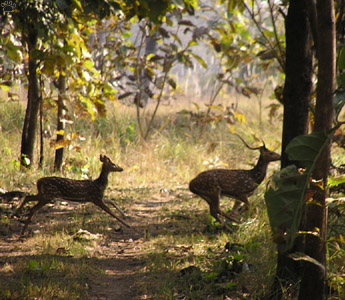
Spotted deer, KNP. |
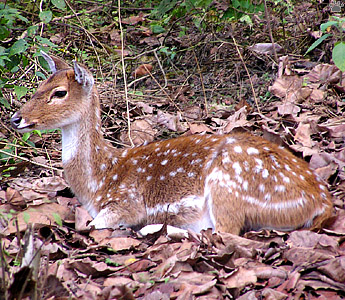
Spotted deer, Konark Wildlife Sanctuary, Orissa. |
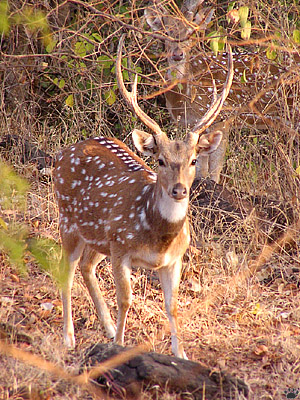
Spotted deer, PNP. |
Unlike the hog deer, its close relative, Indian spotted deer or chital, is very easy to see. It is the most numerous ungulate in most parks, and the only deer still occurring outside protected areas. I think it's the most beautiful deer in the world. |
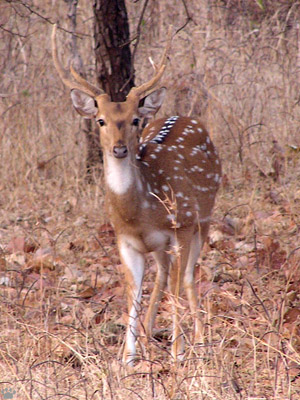
Spotted deer, KNP. |
 |
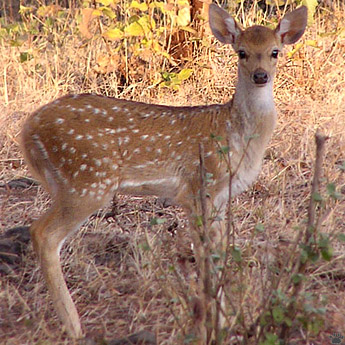 |
| Spotted deer fawn, SGNP. |
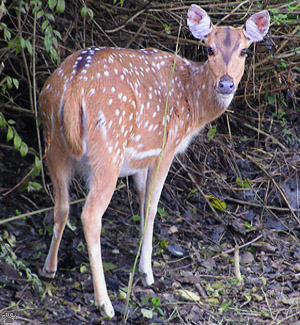
Spotted deer, PNP. |
Spotted deer inhabit many different habitats, but they prefer open forests with little undergrowth except grass. Their alarm call is a sharp whistle. Their herds are often joined by Indian peafowl. |
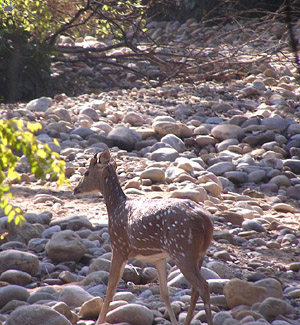
Spotted deer, CNP. |
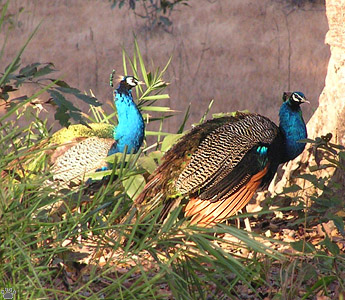 |
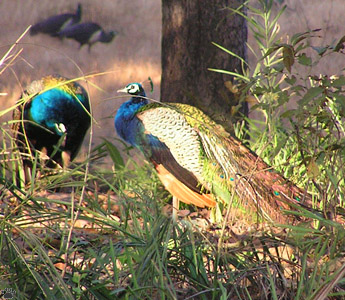 |
| Indian peacocks (Pavo cristatus), KNP. |
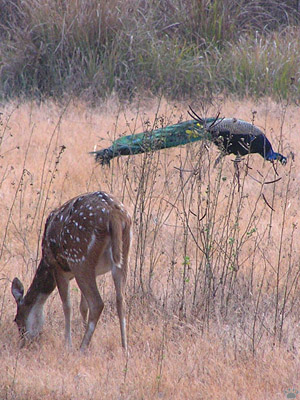
A spotted deer and a peacock, CNP. |
In turn, the deer often follow groups of grey langurs. Monkeys serve as treetop sentinels and drop plenty of fruit and leaves to the ground. Grey langurs are even more common than spotted deer - they inhabit high mountains and cities. |
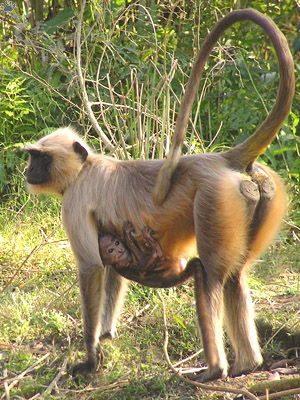
Grey langur (Semnopithecus entellus), KWS. |
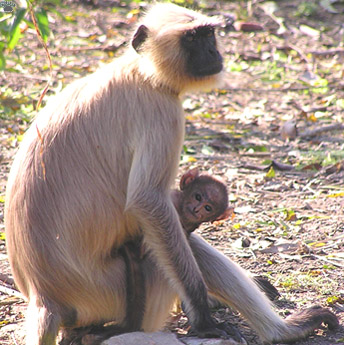 |
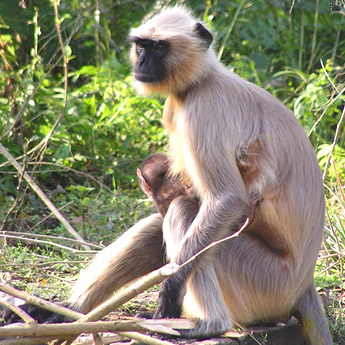 |
| Grey langurs, Konark Wildlife Sanctuary, Orissa. |

Grey langurs, KWS. |
Recently, it's been proposed that grey langurs should be split into 7 species. In this case, the correct name for S. entellus shown here would be Northern Plains langur. All 7 forms are easy to see in different parts of India and Nepal. |

Grey langurs, KWS. |
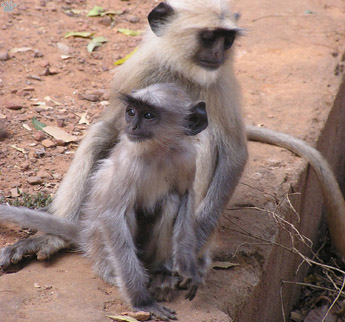 |
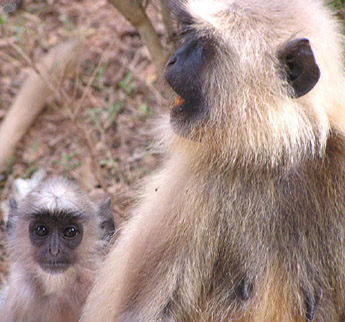 |
| Grey langurs, KWS, Orissa. |
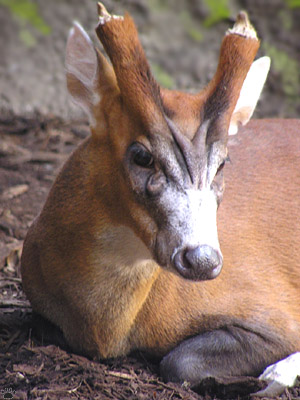
Common muntjac (Muntiacus muntjac), CNP. |
Unlike other Indian deer, the tiny muntjac likes shady forests with dense undergrowth. Its alarm call is a loud bark. It is more common up north. Another ungulate of dense forests is the wild boar, common throughout India, especially in Muslim areas. |
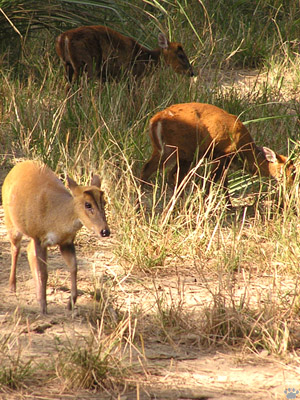
Common muntjacs, CNP. |

Indian wild boars (Sus scrofa cristatus), KNP.
|
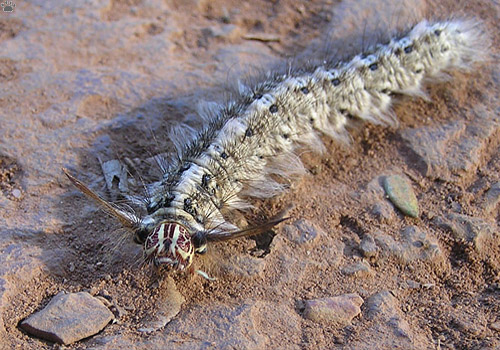
Lymantriid caterpillar, KWS. |
Part 12: Khajuraho
Back to Part 10
Home
|